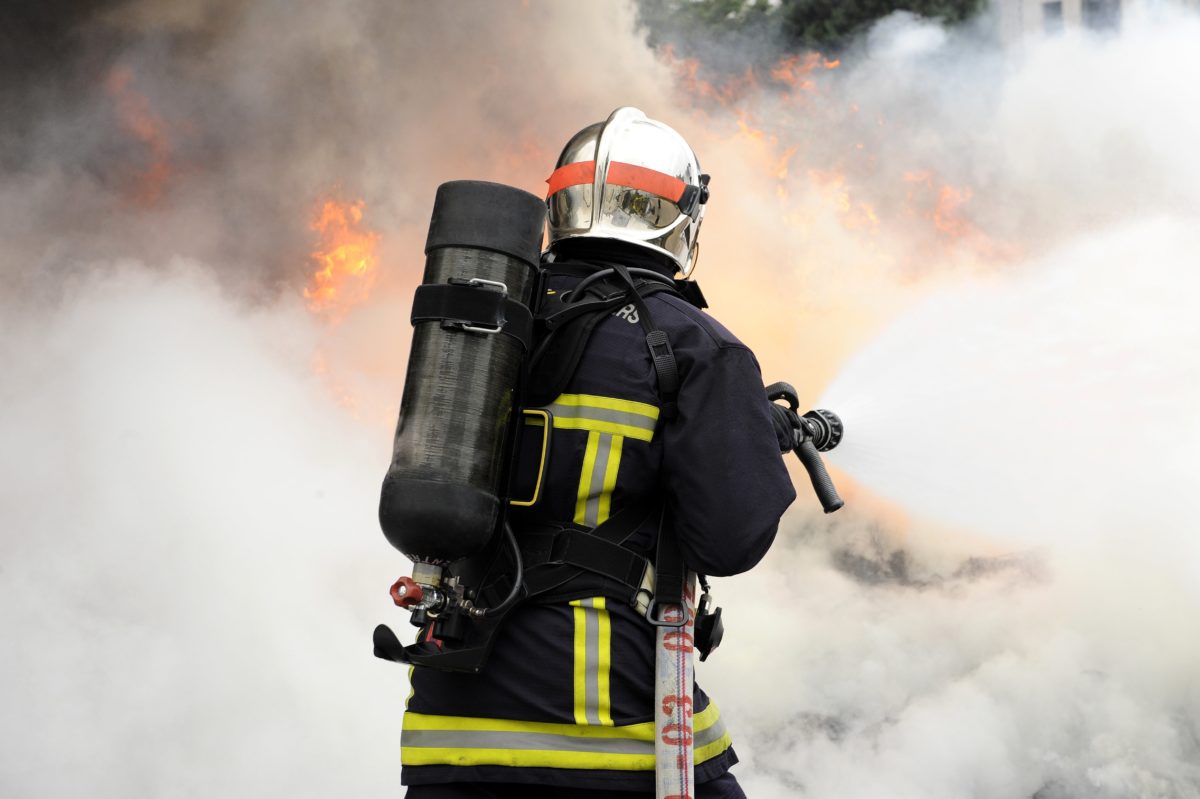
Firefighters are exposed to harmful substances on a regular basis. Whether it be from the burning of forest, brush, crop, structure, tires, waste, or wood, all are extremely damaging and can have both short and long-term effects. All smoke contains carbon monoxide and some smoke can contain many different chemicals that can be very harmful if inhaled, especially without the right prevention and treatment measures. It is beneficial for firefighters and emergency responders to educate oneself on the matter as much as possible, as they are likely to be exposed to heavy levels of smoke in their day-to-day work.
Short-Term Effects
Short-term effects on the respiratory system vary, but there are some common occurrences. Smoke inhalation may result in hypoxemia, which is an abnormally low concentration of oxygen in the blood. There may also be an acute decline in lung function, which may in turn lead to bronchoconstriction, which is the constriction of the airways in the lungs due to the tightening of surrounding smooth muscle, with consequent coughing, wheezing, and shortness of breath. Those affected may also experience airway hyper responsiveness due to their lungs becoming comfortable with over-compensating in response to the smoke. These acute effects are not to be taken lightly: and these are just the short-term effects.
Chronic Effects
Repeated smoke inhalation can be linked to chronic pulmonary disease, and there is also strong indication that excessive smoke inhalation could lead to abnormal lung function and even chronic bronchitis. Certain studies remain unclear at this point, but it is certain that there could be many serious side effects to prolonged smoke exposure. It is a common misconception that firefighters see lower instances of disease and other side effects in comparison with the rest of the public; unfortunately the reality is quite the opposite.
Protection
Firefighting operations should invest in pulmonary function testing, which will allow them to see damage that has already been done and guide them towards the right future preventative measures. A health and safety program will also allow these operations to thoroughly to document treatment and future claims, and it will let those in charge know when corrective action is crucial.
It goes without saying, but firefighting operations should use protective respiratory equipment at all times that is is required on the job. Studies have found that this equipment is effective in minimizing exposure to toxic elements and particles.
About Provident Fire Plus
At Provident Fire Plus, we offer custom tailored packages to best protect firefighters and volunteer firefighters. We understand the risks that emergency response teams are subjected to on a daily basis, and have worked to serve these dedicated professionals for over 87 years. For more information about our products and policies, we invite you to contact our experts today at (855) 201-8880.

